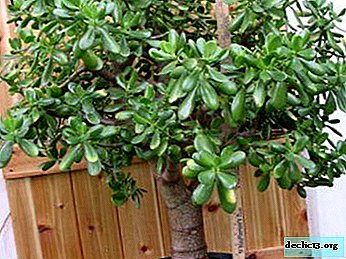Paint brush: choice and difficulties in work
There is more than one type of painting. And using different technologies, you can not only paint the surface in the right color or their combination, but also create a disguise for various defects. Using staining, it is also possible to complete a number of artistic or design tasks.
Quite often, in the painting works, the so-called rhythmic creation of parts is used. For this, of course, a pre-made stencil will be required. A few years ago, the marble effect was a special hit in the painting. Today, a few other tricks are in fashion. So the technology of dyeing with a paint sponge or a crumpled piece of fabric is extremely popular. This on the surface creates a very original result. But of course, you will need special skills to ensure that the work is done at a decent level. Of the special techniques for non-professional people, a spray painting technique may be suitable. At the same time, using a brush or spray gun, you can apply drops of one or several contrasting colors of paint to the surface.
Quite a long time in painting the surface, only a brush was used. Today, the method of painting with a brush is considered very laborious. On average, one square meter of area to be painted takes five minutes of time. For this reason, brush painting is used in the present conditions rather rarely and mainly in relation to difficult from a decorative point of view or very small surfaces. But brushing is not without its advantages. So, painting with a brush is very simple, materials are used economically, and the coating itself is distinguished by its great strength. There were no fundamental changes in the technology of staining with a brush. As before, the coloring composition is applied with a brush by making light movements in the form of a slight pressure. Then the paint must be very carefully and evenly distributed on the surface, making mutually perpendicular movements in different directions. For example, if a wooden surface is painted, then with a brush it is better to first draw along the fibers. Then it can already be moved in the transverse direction. Each of the subsequent layers should be applied only after thoroughly drying the layer of the previous one. Subsequent layers are applied strictly in the perpendicular direction to the previous ones. To the surface, the brush must be held at an angle in a radius of forty-five to sixty degrees.
Brushes - what are they?





Today, the selection of brushes for painting is really huge. They can be of various shapes and sizes. The pile material may also not be identical. The best type of material is recognized as one formed by pork bristles. Such a bristle has the shape of a cone, and its hairs at the ends are bifurcated. This greatly improves the quality characteristic of the paint application process. To make ordinary coloring, you can use a brush whose hairs are made of pork bristles and some other material in the form of plant or animal fibers. Synthetic materials in the form of nylon or nylon have also proven themselves quite well. Such materials add brushes wear resistance property. The size of the brush must be correlated with the type of specific work.
The largest of the brushes are commonly called flywheels. They are used for painting walls, floors or ceilings. Brushes can also vary in the mass of their bristles. So, the brushes are highlighted in:
- two hundred;
- three hundred;
- four hundred;
- and six hundred grams.
An experienced craftsman will certainly tie the stubble of the brush just bought with twine. Over time, the brush will certainly wear out. And as you do this, the harness can be removed. If you chose a hand brush for painting, then you will have to work with both hands. Brushes, the size of which is much smaller, and which are designed to work with only one hand, is called handbrake. Such brushes can be flat or round. The sizes of hand-held brushes are usually denoted by even numbers from six to thirty.
To smooth the surface that has just been painted, thereby improving the quality of painting, as well as create additional original effects, you can use wide and very soft brushes, the pile of which differs by a fair amount. To work, these brushes must be completely dry. To the surface, this brush should be held at a right angle. To intentionally make the surface more rough, you need to use brush trimming. They are made of bleached short bristles. They also work dry. In this case, it is necessary to strike with some force on the just painted base. To carry out special works, differing in a fair amount of subtlety, as well as to create original effects, brushes with uneven pile are used. They can create a somewhat curly surface or deliberately ribbed. In any case, the brush should be prepared before direct work. The preparation of the brush consists in washing it in warm water with soap.
Correct work with a paint brush
To completely eliminate all dust from the brush, it should be dried thoroughly. Drying will help to remove broken hairs. If this is not done, then they will inevitably remain on the surface to be painted together with a layer of paint. Next, the brush will need to be developed. For this purpose, it is dipped into a coloring composition, and then squeezed against the walls of the container. Turn the brush until all its hairs are evenly soaked approximately half their length. In the process of direct work, the brush should not be dipped deep. After each set of paint, try to tap the edge of the container with a brush so that the ink composition is distributed as identically as possible. Start painting with faces or corners. First of all, it is also necessary to paint the most inaccessible of places. And only then go to all other surfaces. First, apply the coloring composition with a fairly thick smear, distributing it carefully and making it as vague as possible.
If the surface is very large, then it must be painted in parts. At the final stage, make another pass over the entire area, moving the brush strictly in one direction. So you successfully hide the boundaries of the layers of paint. However, the layers should be overlapped before the edges of the previous section completely dry. So on the border there will be no thickenings. It can subsequently vary greatly in contrast or even deform. If you use oil paint or enamel for coloring, then the final passage, if the surface is vertical, you need to do the movement from bottom to top. So you can avoid the formation of smudges.
If the surface was made of wood, then the final layer must be applied along the fibers. When painting the ceiling, apply the last layer, moving the brush towards the light. So after drying, the surface will seem perfectly smooth. Using a brush is quite difficult to apply those types of paints that are fast-drying. With the distribution of the upper layers, the lower one already has time to dissolve. As a result, spots form on the surface, because of which, in general, the painted area does not look too beautiful. There is one simple way out of this situation. The first layer should be applied in one direction without excessive distribution, and the second is applied in the perpendicular direction to the first without distribution. After finishing the painting work, the brush must be wrung out. To do this, you can use a spatula. Next, the brushes are washed in a solvent. It must necessarily correspond to the composition that the paint itself had. Brushes can be dried by rotation in the air or by laying on some surface. To store the brushes, it is recommended to wrap in an oiled piece of paper or a plastic film. If the brush is made of natural pile, for example, squirrel or badger, then it should additionally be washed in soapy water.

















